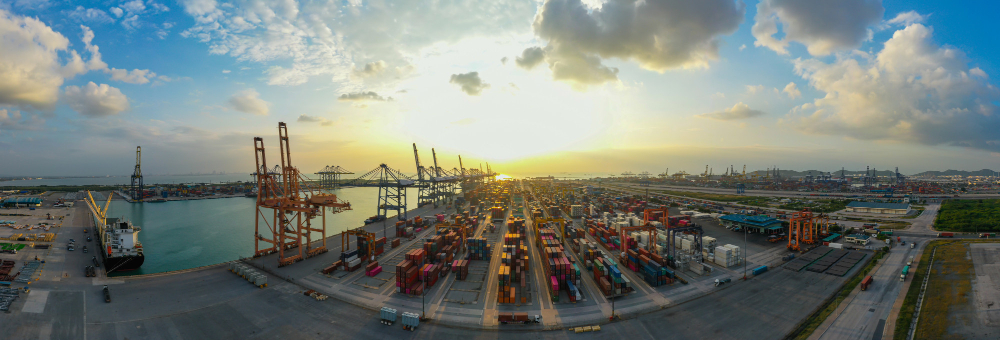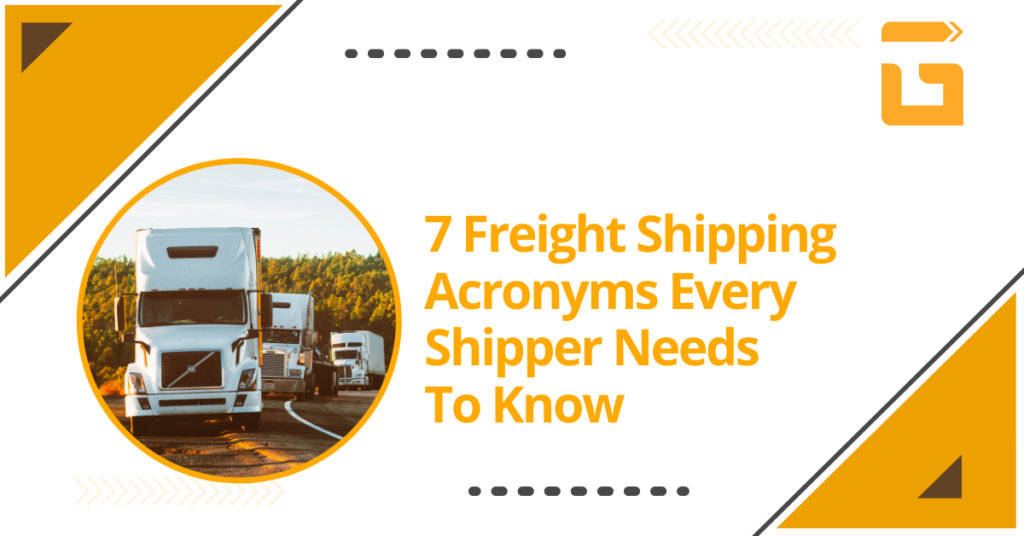Whether you are a first timer in the world of shipping or just looking to update your knowledge on the industry vocabulary, this is an article you need to read. We have compiled a list of 7 freight shipping acronyms that every shipper needs to know.
Common Freight Acronyms:
If you’ve seen a freight quote form, you know that it is full of acronyms. Here are a few common ones you will come across:
NMFC – National Motor Freight Classification
The National Motor Freight Classification was created to standardize pricing for freight shipments. Every article shipped in the U.S. comes under one of eighteen freight classes. These classes are determined by shipment density, stow-ability, liability, and handling.
DV – Declared Value
It is the monetary value of a designated shipment reported by the shipper. It decides the shipping charges of the shipment. Moreover, it can also act as a tool to limit carrier liability in damage or loss.
L.G. – Lift Gate
The liftgate is used to lift pallets from the floor to the trailer. It is power operated. When there are no available loading docks, a liftgate is used for loading/unloading.
Consignor / Consignee – CNOR – CNEE
A CNOR is a person shipping, while a consignee is the one who will receive the shipment.
BOL – Bill of Lading
This is another common acronym used. A bill of lading is a comprehensive contract between a carrier and shipper. The agreement is legally binding. Every BOL has complete information about the shipper as well as the carrier. It also has details like shipment date, packaging details, freight class, and hazardous material description, if any.
POD – Proof of Delivery
Proof of delivery paperwork contains the consignee’s signature indicating that he has received the load. Sometimes BOL is used as a POD, and it needs to be signed so the carrier can pay.
OS&D Report – Overage, Shortage, and Damage
A consignee files this OS&D report if there are any issues with a shipment. An overage occurs if a receipt gets more product than it ordered. Items that have been damaged and cannot be sold by the receiver come under damage.
Truck Ordered But Not Used – TONU
If a truck reaches a stop to pick up a shipment but is not loaded as the load is not ready, it is TONU. If it is the shipper’s fault, he may have to compensate the carrier for their time and resources.
Some other terms:
- (ETD) Estimated time of departure: The day and time a shipment is estimated to depart from a port or location.
- (ETA) Estimated time of arrival: The time and day on which a shipment is set to arrive at its location.
- (POL) Port of loading: The port of origin from where a shipment is loaded on its designated mode of transportation.
- (POD) Port of discharge: The consignee picks up the load from here, where the carrier unloads it.
- (GRI) General rate increase: this term is used by ocean carriers. It implies an increase in the freight rates applied by shipping lines when prices decrease.
- (ISF) Importer security increase is a regulation that requires maritime load imported into the U.S. to be declared 72 hours before departure.
Conclusion:
Now that you know about the common freight shipping acronyms of the trucking industry, you can confidently tackle freight quotes and other documents easily.
Also Read: How To Minimize The Potential Of Damaged Freight?




